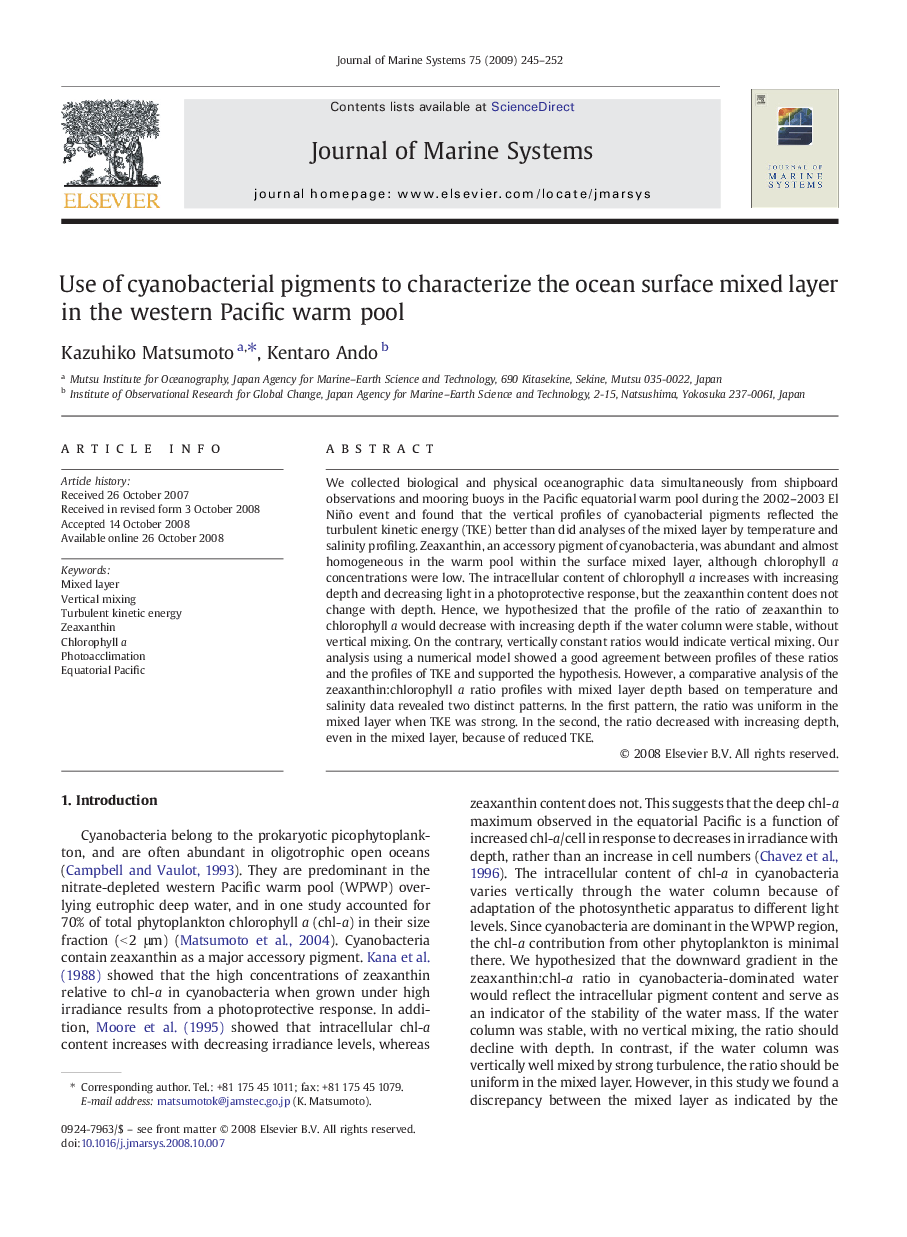| Article ID | Journal | Published Year | Pages | File Type |
|---|---|---|---|---|
| 4548920 | Journal of Marine Systems | 2009 | 8 Pages |
We collected biological and physical oceanographic data simultaneously from shipboard observations and mooring buoys in the Pacific equatorial warm pool during the 2002–2003 El Niño event and found that the vertical profiles of cyanobacterial pigments reflected the turbulent kinetic energy (TKE) better than did analyses of the mixed layer by temperature and salinity profiling. Zeaxanthin, an accessory pigment of cyanobacteria, was abundant and almost homogeneous in the warm pool within the surface mixed layer, although chlorophyll a concentrations were low. The intracellular content of chlorophyll a increases with increasing depth and decreasing light in a photoprotective response, but the zeaxanthin content does not change with depth. Hence, we hypothesized that the profile of the ratio of zeaxanthin to chlorophyll a would decrease with increasing depth if the water column were stable, without vertical mixing. On the contrary, vertically constant ratios would indicate vertical mixing. Our analysis using a numerical model showed a good agreement between profiles of these ratios and the profiles of TKE and supported the hypothesis. However, a comparative analysis of the zeaxanthin:chlorophyll a ratio profiles with mixed layer depth based on temperature and salinity data revealed two distinct patterns. In the first pattern, the ratio was uniform in the mixed layer when TKE was strong. In the second, the ratio decreased with increasing depth, even in the mixed layer, because of reduced TKE.
